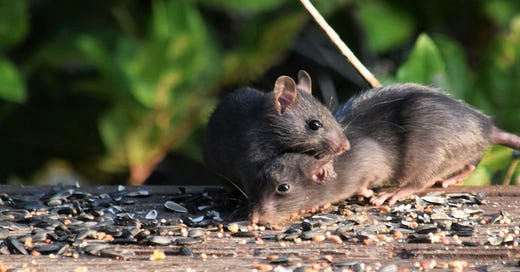Mice Join the List of Animals that Provide First Aid to Injured or Unconscious Companions
When placed in a cage with an unresponsive companion, mice will attempt to wake them, going so far as unblocking their airway
Hiya!
Our creativity and unrelenting need for progress may set us apart from the rest of Earth’s animal kingdom, but research reminds us that our emotional behaviors are less distinct. Instead, the more we look, the more we see that many other species seem to experience the same emotions we do — fear, love, joy, sadness, and more — and they behave similarly to us in response.
For instance, a desire to help others is one of our more selfless human qualities — but it isn’t ours alone. Many animals, especially mammals, behave in ways that aid others. In fact, researchers recently discovered such behavior is prevalent even among laboratory mice.
First Aid in the Animal Kingdom
There’s already a growing pile of reports documenting animals that try to help struggling, injured, or incapacitated members of their species. Even some insects will try to help others. Take ants, for example, which will secrete antibiotics for their injured nest mates.
Such behaviors are especially widespread among mammals. For instance, wild chimpanzees utilize medicinal plants to treat illness and injuries. Chimps are also known to touch and lick their wounded peers. Meanwhile, dolphins have been seen pushing distressed pod mates to the water’s surface so they can breathe, and elephants readily assist ailing relatives.
And now, mice have been added to the list.
Recent Study
Professor of Physiology and Neuroscience and Director of the Center for Neural Circuits and Sensory Processing Disorders at the University of Southern California (USC), Li Zhang and his colleagues conducted a series of novel experiments on laboratory mice. They published their findings on February 21, 2025, in the journal Science.
Throughout multiple experiments, Zhang and his team placed mice within an enclosure with a familiar cage mate under anesthesia and thus unresponsive, along with or without another conscious mouse moving around. Then the researchers filmed how the primary mouse behaved in response.
Initial Results
Remarkably, the researchers found that the mice spent an average of over 6 of the 13 minute observation window, or about 47 percent of the time, with the unconscious mouse. Further, the various mice behaved similarly when caring for their unresponsive cage mates. More specifically, the mice engaged in three common behaviors.
Keep reading with a 7-day free trial
Subscribe to Curious Adventure to keep reading this post and get 7 days of free access to the full post archives.



